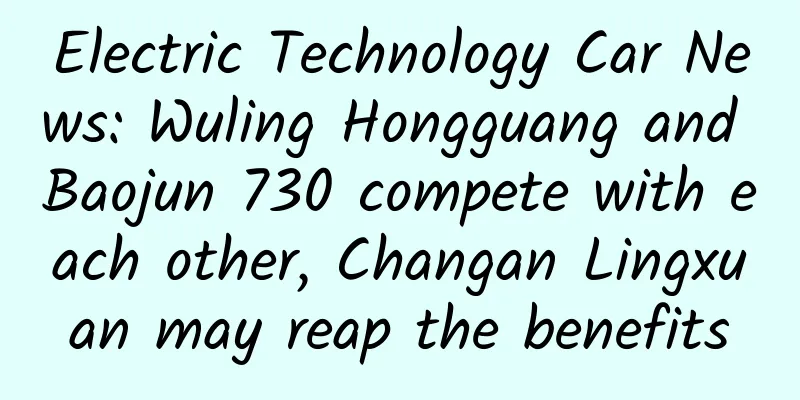There is a kind of battery that can keep your mobile phone powered for 100 years

|
Produced by: Science Popularization China Author: International Institute of Neutron Science Producer: China Science Expo Are you also troubled by the frequent charging of your mobile phone? Are you also troubled by the regular surgery to replace the battery of your pacemaker? Do you know how deep-sea exploration unmanned submersibles can work longer? Do you know that the Mars rover uses a special battery to extend its battery life? In 2021, the Curiosity rover that landed on Mars used a multi-purpose radioisotope thermoelectric battery (MMRTG), which can solve the above problems well. Today, I will introduce you to this magical battery-the isotope battery. 1. What are isotopes and what can they do? Isotopes refer to the same element with the same number of protons (atomic number) in the nucleus but different numbers of neutrons. For example, the common hydrogen element in our lives has three isotopes, namely protium (H), deuterium (D, heavy hydrogen), and tritium (T, super tritium). They are isotopes of each other and are different nuclides of the same element. Schematic diagram of the atomic structure of hydrogen, deuterium and tritium (Image source: hand-drawn by the author) Some of these elements are very unstable and can spontaneously emit particles or rays, releasing a certain amount of energy to become stable atoms of another element. These elements are radioactive isotopes. The process of radioactive isotopes emitting rays is the process of isotope decay, and the time required for the number of radioactive nuclides to decay to half of the original is the half-life of the radioactive isotope. For example, the half-life of 238Pu is 87.7 years, which means that after a 238Pu radioactive source has been placed for 87.7 years, only half of the plutonium-238 has decayed. In addition to their role in national defense science and technology, many isotopes also play an important role in our daily production and life. For example, in food production, the isotope 60Co can be used to generate gamma rays to irradiate and sterilize food; in medical clinical practice, more than 100 isotope therapy methods have been established, which can achieve targeted radiation of some cancer cells and prevent them from continuing to spread in the patient's body; in the energy field, nuclear reactors are used to provide electricity. In addition to the above applications, the thermal energy of isotopes such as 238Pu during decay can be used to manufacture isotope thermoelectric batteries, and the radiation particles released during the decay of 63Ni can be used to manufacture radiovoltaic effect isotope batteries. 2. What does an isotope battery look like? Here we focus on two types of batteries with more mature applications: isotope thermoelectric battery and radiovoltaic effect isotope battery. Isotope thermoelectric battery (RTG) is a power generation device that uses the Seebeck effect of thermoelectric materials to directly convert the decay heat of isotopes into electrical energy. RTG consists of three parts, from the inside to the outside, they are isotope heat source, thermoelectric conversion device, and heat dissipation shell. The heat energy emitted by the isotope heat source causes a temperature difference between the two ends of the thermoelectric material, thereby generating current using the Seebeck effect of the thermoelectric material, and the shell made of special materials can both isolate radiation and release unused heat energy. Typical structure of isotope thermoelectric battery (Image source: Fenglin Nuclear Team) The radiovoltaic effect isotope battery is composed of a radiation source, a semiconductor transducer device, electrodes, a shell and other structures. Its working principle is that when the radiation source interacts with the semiconductor material, electron-hole pairs are generated through ionization excitation, and then these generated electron-hole pairs are separated and collected by the electrodes under the action of the built-in electric field of the semiconductor, thereby realizing the conversion of the decay energy of the radiation source into electrical energy. 3. What can isotope batteries do? Isotope batteries have the common advantages of compact structure, high reliability, long life (can continuously supply energy for decades), no environmental impact, and no maintenance. Therefore, they can be used once and for all in some scenarios that require long-term maintenance-free or complex environments that are difficult to charge, until they are retired. The ability of isotope batteries to resist external interference can crush a number of ordinary chemical batteries; at the same time, the service life of isotope batteries is mainly related to the half-life of the isotope, and the longest can even be used for a hundred years. It is precisely because of the above advantages that radioactive isotope batteries have the unique ability to "reach for the moon in the sky and catch turtles in the five oceans" in practical application fields. In 2018, my country successfully launched the Chang'e-4 lunar probe, which was equipped with an isotope thermoelectric battery that met various technical requirements at a temperature of -190°C during its lunar night hibernation. In contrast, ordinary chemical batteries cannot work at such extreme low temperatures. In actual operation, the data sent back by the lunar rover showed that the isotope thermoelectric battery provided heat and power normally, realizing the first space application of isotope thermoelectric batteries in my country. In the deep ocean, solar cells are almost useless, and the service life of fuel cells and other chemical batteries is too short. At this time, isotope batteries can shine. For example, it can be used as a power source for submarine navigation beacons, ensuring that the beacons flash every few seconds for decades; the United States uses isotope batteries as a power source for submarine cable relay stations, which can work safely and reliably under high pressure at a depth of five or six kilometers. Isotope batteries also have biomedical applications. For example, in pacemakers, the commonly used lithium-iodine batteries are easily interfered by electromagnetic waves, which brings inconvenience to users and has a lifespan of about 5 years. Medical isotope batteries are not easily affected by electromagnetic interference and have a service life of about 15 years. Some heart disease patients in the world have been implanted with isotope battery-driven pacemakers, giving them a new lease of life. Moreover, with the rapid development of Internet of Things technology, in order to ensure that integrated circuits (ICs), sensors, low-power devices and other micro-electromechanical systems (MEMS) can dissipate heat normally without affecting wireless communication signals, the energy supply devices of these electronic devices and system modules are gradually becoming miniaturized, long-life and stable. Isotope batteries can better meet this requirement than ordinary chemical batteries. 4. To what extent have isotope batteries been developed? From the first American artificial satellite "Explorer 1" carrying isotope batteries into outer space for the first time in 1961, to the Apollo lunar spacecraft carrying two isotope batteries to the moon, to a company obtaining the qualification to sell isotope battery products in 2010, after decades of development, isotope batteries have been industrialized in the United States. A similar development process from scientific research to industrialization also occurred in the Soviet Union and Russia. However, my country's isotope batteries started late, especially in the industrialization of isotope batteries, and there is still a lot of room for improvement. According to the deep space exploration plan announced by the National Space Administration in 2018, my country will carry out exploration of the moon, Mars, and Jupiter in the next 30 years, which means that the localization of isotope batteries is an urgent need. At present, relevant domestic teams are increasing their investment in the research and development of isotope batteries, and a hundred flowers are blooming. Isotope batteries are developing rapidly at a speed visible to the naked eye. I believe that in the future, they will be able to bring great convenience to all aspects of human daily life. After learning about such isotope batteries, are you excited? The cover image of this article is from the copyright library and is not authorized for reproduction |
<<: Where does a fart go after you hold it in? Here's the stinkiest science lesson ever
>>: Understand the aircraft carrier battle group in one minute!
Recommend
How to prepare the 2016 annual report? How to make a marketing promotion and operation plan in 2017?
2016 Annual Report Guidelines 1. Overall operatio...
Reliable recommendations for drinking and tasting tea in Changsha, sharing of the most cost-effective places in Changsha!
185-6916-1745 Wei QQ synchronization, sharing the...
Is “use it and leave it” outdated? Lessons from the Battle Between Two Giants of Android Optimization Tools
Zhang Xiaolong said in a public speech last year ...
The roasted lamb in Kashgar is so delicious!
Written by Wei Shuihua Header image | Food Photog...
More than 30,000 butts get blown up by toilets every year! Don't do this when you go to the toilet →
Source: Dr. Curious...
What are the functions of Lanzhou housekeeping service mini program? How much does it cost to develop a housekeeping WeChat mini program?
In modern society, people's pace of life is g...
What are the common ways of community fission? What are the essential methods for acquiring customers through social media?
When doing various marketing fission activities, ...
Advanced event planning: 4 steps to control event costs
An activity is generally divided into four parts ...
The "magic grass" you bought is something that even botanists are reluctant to touch when collecting specimens!
Part 1 True and false snow lotus Anyone who has r...
12 ways to activate your social network
Many communities die soon after they are establis...
A simple way to quickly and effectively increase real reviews on the App Store!
No matter how the industry spreads that reviews a...
Jing Xufeng's chat method for building a strong mentality - Let you strengthen your mentality through chatting
Jing Xufeng's chat method for building a stro...
Overseas promotion: Google's marketing skills!
1. Natural Optimization 1. Advantages: The longer...
H5 Cache Mechanism Analysis of Mobile Web Loading Performance Optimization
1. Introduction to H5 cache mechanism H5, or HTML...









